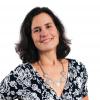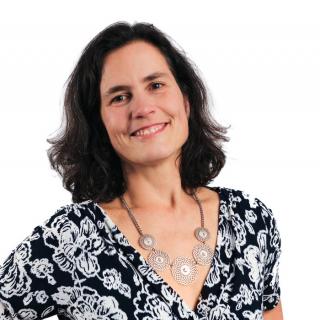
Some of my favorite childhood memories are the hours my sisters and I spent playing outside, on and around the dead-end street where we lived — kick the can, flashlight tag, biking. Our playmates? Whoever was around. The road, and the driveways and yards surrounding it, were ours.
But though that sounds like a nostalgic dream from days gone by, the idea of "play streets" — blocking off roads to traffic so kids can play and neighbors can connect — is a movement that's growing in Seattle and communities across the nation. And it's not just for June, July and August. For the next two Saturdays, two neighborhoods will close off their streets to cars as part of an expansive "open-streets" Summer Parkways celebration (Sept. 12 in the Central District, Sept. 19 in Ballard). In addition, the Seattle Department of Transportation's two-year "Play Streets" program (where neighborhoods can apply to shut down a street to cars on a regular basis) has been wildly successful, and the program has now been extended to April 2016.
Street festivals in September? Play streets in the winter? Intrigued, I contacted the Seattle Department of Transportation to find out more. Nicole Freedman, chief of active transportation partnerships for Seattle, shared these thoughts.
What are the Summer Parkways events?
Summer Parkways is in the spirit of Open Streets events, which have become popular around the country. Events like Summer Parkways have proven transformative in terms of inspiring neighbors to celebrate and explore their neighborhood in active ways. It’s amazing to see what happens when people experience their neighborhood by foot or bike, or even just playing in the streets. I think they always see their neighborhood a little different afterwards.
Why were the Central District and Ballard chosen? What are a couple of the unique things happening at Summer Parkways that families would be interested in?
 Courtesy Summer Parkways
Courtesy Summer Parkways
At the September 19 event in Ballard, we’ll have Family Bike and Kidical Mass, a pet parade, bouncy house, Tai Chi and more. Find out more at our website.
Last weekend's event in the Central District included Riding in a Zorba Ball, Skate Like a Girl, and the Kids Teddy Bear Clinic where kids can bring in their teddy bears for a doctor’s visits at Judkins Park.
How does this relate to the Play Streets program run by SDOT?
All of these events are part of Seattle Department of Transportation and help people see what a tremendous asset our streets are. A vast majority of the public space owned by cities is actually dedicated to streets. When we open up streets for the people, and not just use them to move cars, our city becomes so much more.

Can you give me some stats about the Play Streets program and how it’s grown?
Seattle's Play Streets program started in May 2014. There are currently 42 ongoing play streets and we have issued permits to 113 play street hosts. Since spring of 2015, we have been issuing about 20 play street permits per month.
How is it taking form throughout the city?
Part of the success of the program has been the wide range of ways people have made use of their play streets. Some hosts have had one-time parties to let parents and kids from surrounding blocks meet and play, while others team up with their neighbors to have weekly get-togethers. We’ve seen play streets used for community clean-ups, potlucks, bike safety training, and water-gun battles. When neighbors get together and have some extra space to play, we’ve seen that they can get pretty creative.

Finally, I see that the Play Streets program has been extended through April 2016. So Play Streets can operate through the winter?
Yes, play streets can happen in the winter, though we expect activity to slow down due to the shortened daylight hours. We’ve extended the program to continue learning more about how people use the play streets. This fall, SDOT is also planning to make revisions to the program guidelines based on those lessons learned.
Find out more about Summer Parkways and Play Streets




